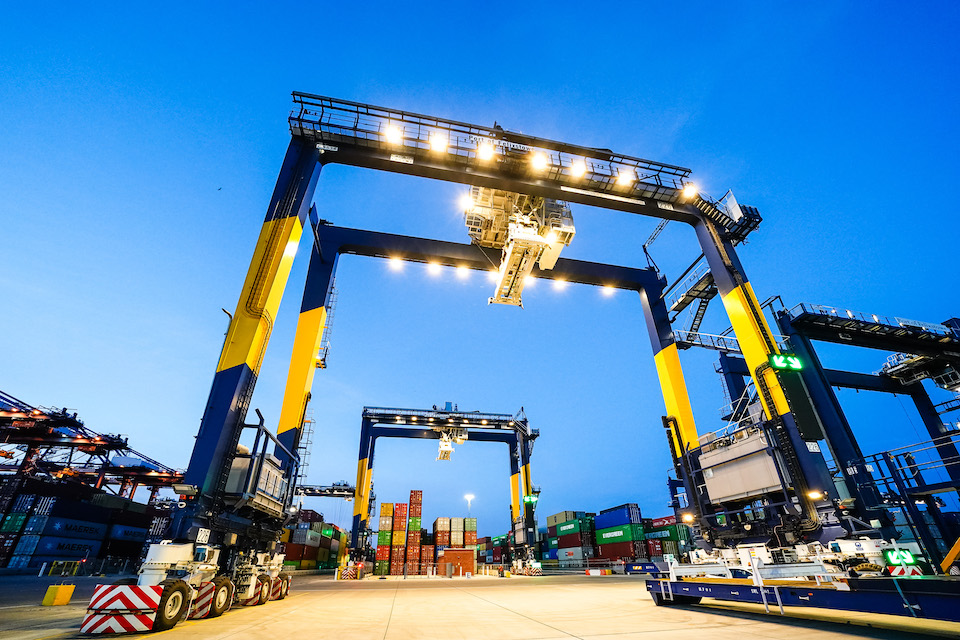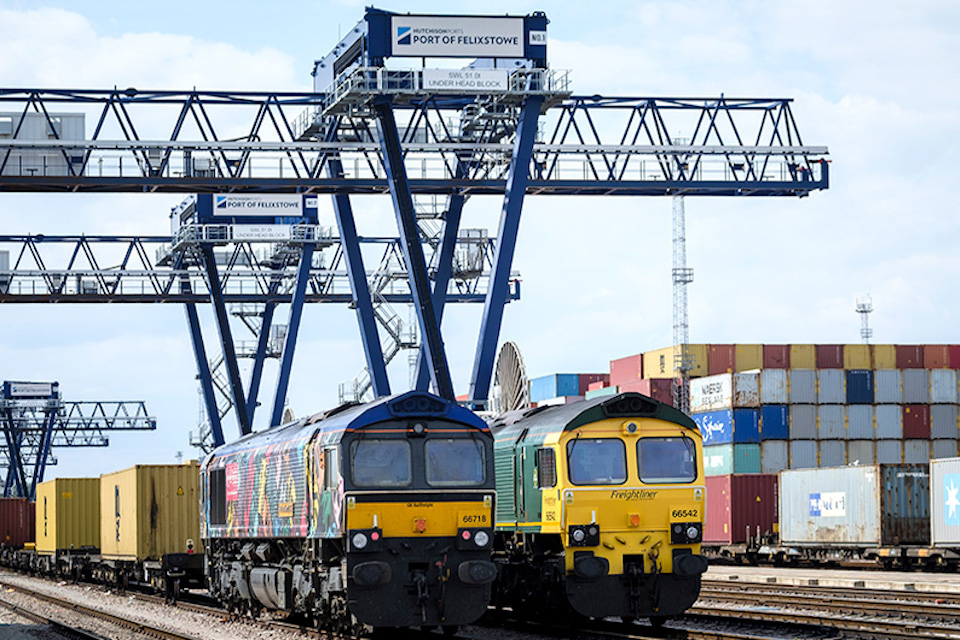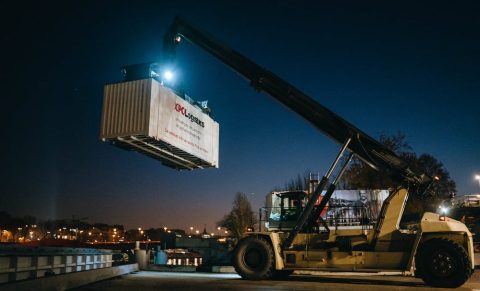Felixstowe is one port, three terminals, and now 5G

Often touted as Britain’s busiest intermodal port, there’s never a dull moment at Felixstowe, on the east coast of Great Britain. The latest addition though is not a fresh stack of containers on the quayside, it’s the implementation of a new 5G communications network, available across the entire estuary complex.
If there is one answer to the supply chain congestion – it’s speed. So, it can only be a relief to operators and customers that communications are speeding up at Felixstowe. The introduction of a new 5G system, in harmony with a UK government digital initiative, means that handling and throughput will be faster at the port, helping enable the long-held ambition to increase rail freight uplift from the quayside.
Proving 5G Capabilities
The Port of Felixstowe along with consortium members, Three UK, Blue Mesh Solutions and the University of Cambridge was successful in an application for grant funding under the 5G Testbeds and Trials programme run by the UK government’s Department for Digital, Culture, Media and Sport (DCMS). The project aims to prove 5G capabilities in a busy port environment.

What that means for customers and operators is an enhanced predictive maintenance environment. In other words, putting things right before they go wrong – especially the critical fleet of quayside cranes. That enhanced reliability will be ever more vital, given the government targets for economic growth. The relevance too of sanctions on Russia, and the disruption to Silk Road traffic, will almost certainly put stress on UK maritime routes. For a country dependent on overseas trade, additional pressure on ports is always a cause for concern.
Huge investment
Despite issues in the supply chain, there is still relentless growth of intermodal traffic. That has put container terminals under increasing pressure, and none more so than Felixstowe. This step up in the port’s technological game has come at a cost. A huge investment of 200 million pounds (222 million euros) has gone into the predictive maintenance of quay cranes and providing remote communications for distant parts of the complex, not least the three rail terminals constituting the eleven kilometres of tracks within the port complex.
“5G has huge potential to revolutionise a wide range of UK industries and 5G Ports is just one testbed the government is funding to help achieve this”, said the UK government’s digital infrastructure minister, Julia Lopez. “It’s incredible to see our investment in innovative 5G tech is empowering Britain’s biggest and busiest container port to explore new ways of driving efficiency, improving safety and supporting the UK’s post-Brexit status as a global trading nation.”
Additional capacity
Britain has always relied upon maritime trade. If increased traffic comes to pass, the UK does have additional port capacity. However, Felixstowe’s strategic location on the UK’s south east coast will always favour it for communication with all the major ports in north west continental Europe.

It may be along time before any Russian traffic ties up at the quayside in Felixstowe, or any other British port. The short term loss of traffic may well be offset by new routes, necessitated by increased international tension. If that means extra work for Felixstowe, then that investment in efficient 5G technology will be money well spent.
You just read one of our premium articles free of charge
Want full access? Take advantage of our exclusive offer




